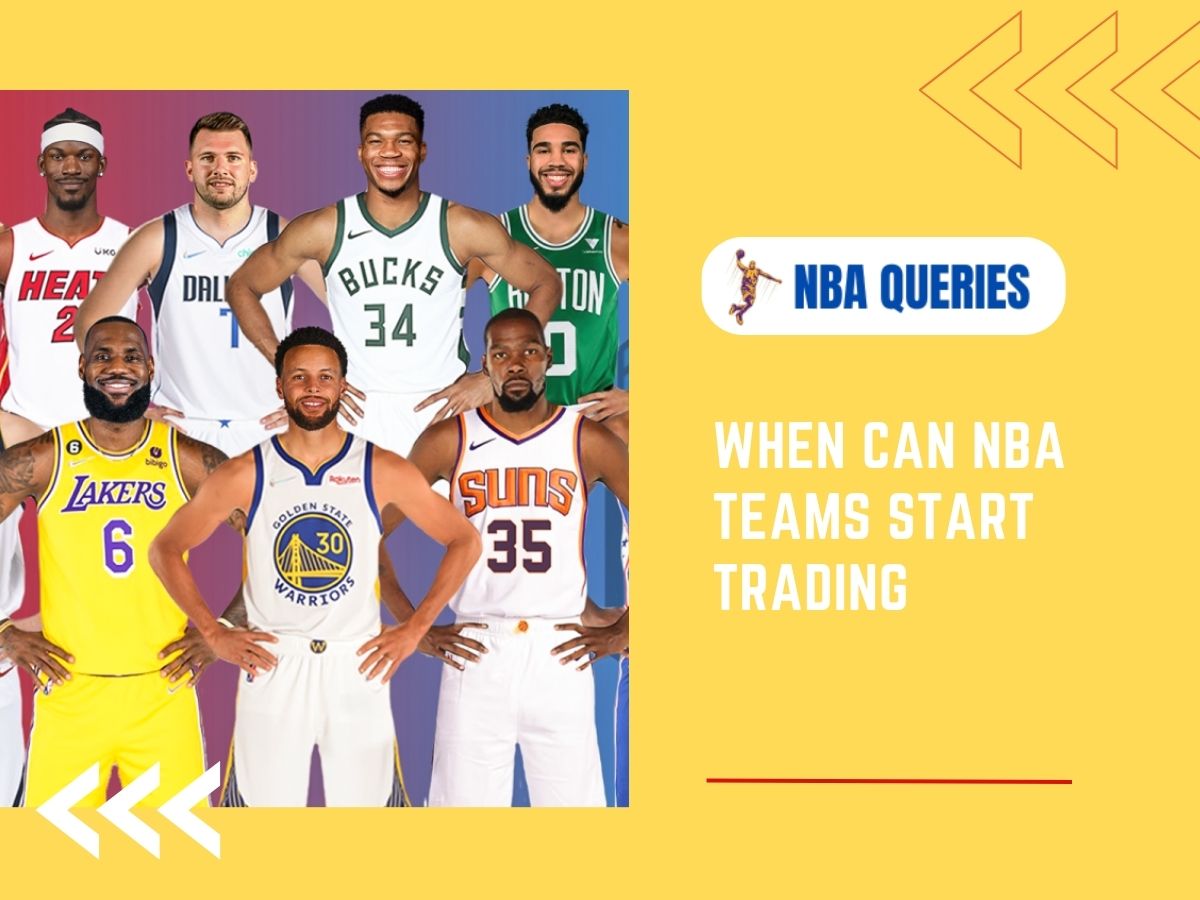The NBA trade market is a complex and dynamic aspect of the basketball world, captivating fans and franchises alike. This article aims to shed light on the intricacies of when NBA teams start trading, the regulations governing these trades, and the strategic maneuvers teams use to navigate through the trade season. With a focus on ensuring clarity and depth, we will cover everything from the basic rules to the strategic implications of trades in the NBA.
When Can NBA Teams Start Trading? The Timeline
NBA teams operate within a specific timeline for trading players. The regular season’s commencement marks the beginning of the trading period, which extends up to the NBA trade deadline on February 9 at 3 p.m. ET. Teams that fail to make the playoffs can initiate trades the day after their last regular season game, ensuring that all franchises have the opportunity to restructure and strategize for the coming seasons.
Key Dates and Eligibility
- December 15: A critical date in the NBA calendar as free agents signed in the offseason become eligible for trades. This rule aims to prevent immediate turnover and allows teams and players to settle before potential moves.
- February 9: The trade deadline for the NBA season, post which no trades can be initiated until the season concludes.
Understanding these dates is crucial for teams planning their strategies and for fans speculating about potential trades.
Trade Rules and Regulations
The NBA’s Collective Bargaining Agreement outlines specific rules that teams must follow during trades. These include:
Salary Matching
While exact salary matching is not a requirement, NBA teams strive to approximate salary equivalence in trades to comply with salary cap constraints. The traded player exception is a tool used by teams to facilitate trades without matching salaries directly, allowing for strategic financial management.
Trading Injured Players
Contrary to popular belief, injured players can be traded in the NBA. This flexibility allows teams to make strategic decisions even when facing injuries to key players. However, the physical condition of players is a significant factor, and trades involving injured players undergo rigorous medical scrutiny.
Player Trading Frequency
There is no limit to how many times a player can be traded, leading to some players being traded multiple times within a single season. This aspect of the trade market underscores the fluidity and unpredictability of player movement in the NBA.
Read:
Strategic Implications of Trades
Trades are a vital tool for NBA teams looking to enhance their competitiveness, manage financial obligations, and plan for the future. The decision to trade a player or acquire new talent can have far-reaching implications on a team’s performance and strategic direction.
Building Competitive Teams
Teams often use trades to acquire key players who can complement their existing roster, aiming to build a competitive lineup capable of contending for championships.
Financial Management
The NBA salary cap and luxury tax regulations compel teams to manage their finances judiciously. Trades are a critical mechanism for teams to adjust their financial commitments and avoid punitive tax implications.
Planning for the Future
Trades allow teams to acquire draft picks and young talent, providing a pathway to rebuild and plan for long-term success. This strategic use of trades is particularly relevant for teams in transition or looking to refresh their roster.
Advanced Trade Mechanisms
Traded Player Exception (TPE)
The TPE is a critical tool for teams looking to improve their roster while managing salary cap implications. It allows a team to trade away a player without taking back equivalent salary, creating a credit that can be used to acquire other players for up to one year. This mechanism was notably used in the Mike Conley trade to Utah, demonstrating its value in facilitating strategic moves.
No-Trade Clauses and Player Consent
Some veteran players have no-trade clauses built into their contracts, requiring their consent for any trade. This clause gives players significant control over their career trajectory and can influence trade negotiations.
Draft Picks in Trades
Incorporating draft picks into trade deals is a common strategy for teams looking to build for the future or acquire immediate talent. Picks provide teams with the opportunity to draft young, promising players, making them valuable assets in trade negotiations.
Notable NBA Trades
Big Names on the Move
The NBA has seen its fair share of blockbuster trades involving high-profile players. These trades often have a profound impact on both the teams involved and the league’s competitive balance. Players like Bradley Beal, Zach LaVine, and Russell Westbrook have been at the center of trade rumors, demonstrating the constant speculation and strategic planning that surrounds NBA trades.
The Impact of Trades
Trades can transform the fortunes of a team overnight. Acquiring a star player or offloading significant salaries can change a team’s trajectory, influencing playoff races and championship battles. The strategic use of the TPE, draft picks, and player contracts allows teams to navigate the complexities of the NBA trade market effectively.
NBA Trades: The Art of the Deal
To master the NBA trade market, teams must balance short-term gains with long-term planning. This involves a nuanced understanding of the salary cap, player valuation, and the strategic use of draft picks and trade exceptions. Successful trades require a combination of savvy negotiation, strategic foresight, and a deep understanding of the league’s rules and regulations.
Final Thoughts
The NBA trade market is a dynamic and integral part of the league’s ecosystem, shaping the competitive landscape and offering teams the opportunity to reinvent themselves. By leveraging advanced trade mechanisms, understanding the strategic implications of player movements, and executing well-timed deals, teams can position themselves for success both on and off the court.

